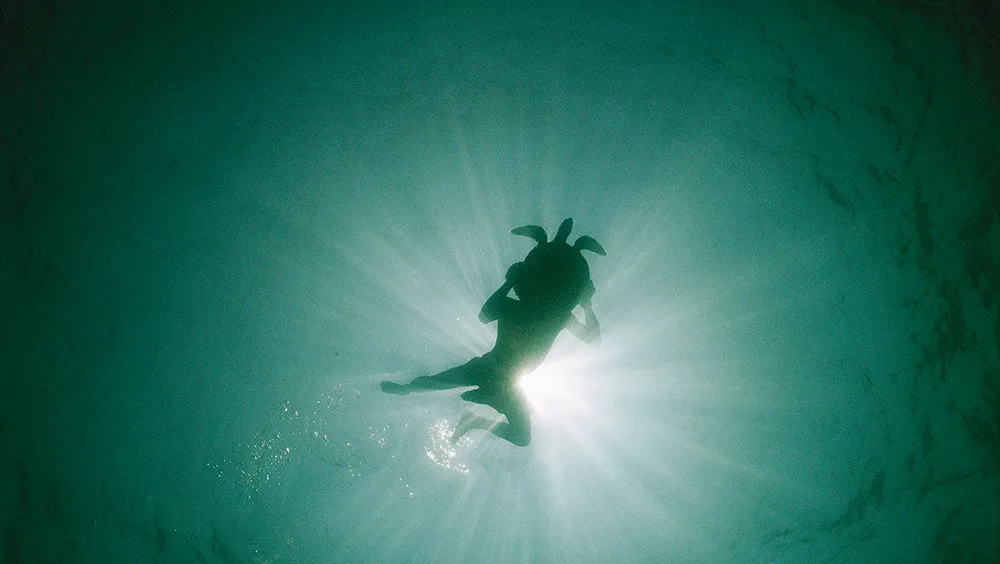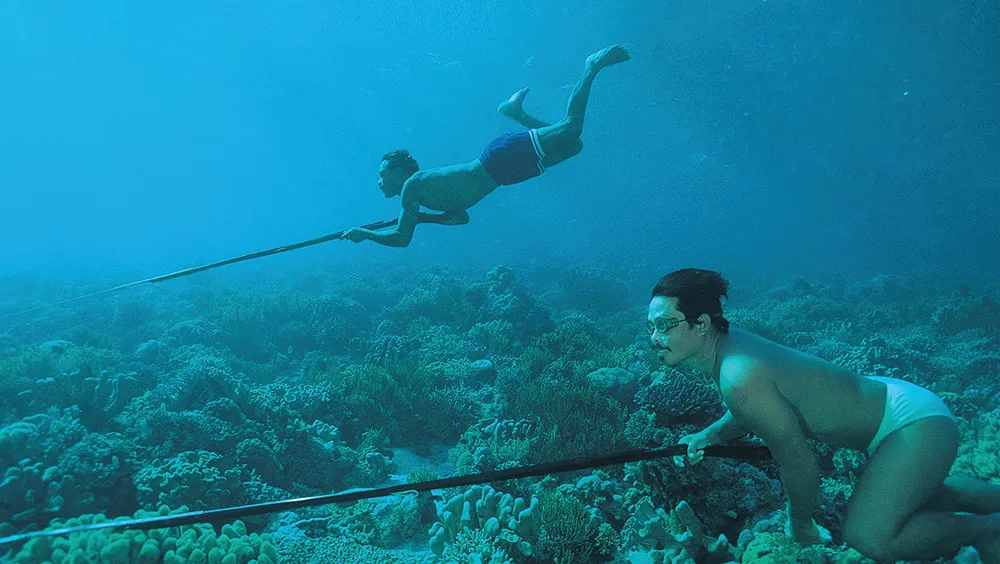1
Underwater vision: Moken nomads

Our eyes are adapted to a life on land, which means we can only see blurry shapes when we swim underwater without goggles. But children in a tribe of sea nomads – the Moken – who reportedly learn to swim before they can walk, can see well enough to collect shells, sea cucumbers and clams from the seabed.
There are around 2,000 to 3,000 Moken living in the Andaman Sea, of the coasts of Myanmar and Thailand.
Researchers at Lund University in Sweden estimate that Moken children have more than twice the underwater visual clarity of European children, even though their sight on land is the same.
Read more about eyes:
- Is human eyesight getting worse?
- Do any mammals other than humans have 'whites of the eyes'?
- Why do people have different eye shapes?
They focus underwater by constricting their pupils and changing the shape of the eye’s lens. The researchers found that European children can be trained to see just as well as the Moken.
It’s difficult to tell whether Moken children learn this better vision from a young age or whether evolution has played a role, so we might all be able to see a little better beneath the waves if we put our minds to it.
2
Cold resistance: Himalayan Monks

Up in the climes of the Himalayas, there are tales of monks who use breathing and meditation to raise their body temperatures to the extent that they can dry wet sheets wrapped around their bodies, casting off steam into the freezing air.
Researchers from the US and Singapore have investigated these claims by measuring the monks’ core (armpit) and peripheral (finger) temperatures. During the measuring, they asked them to use the breathing techniques either with or without the meditation. The researchers found that while the breathing could raise body temperature, adding the meditation increased it to that seen in a typical fever.
‘Iceman’ Wim Hof has used similar techniques to the monks to achieve the world record for longest ice bath (one hour, 52 minutes and 42 seconds) and has even run a marathon in the Arctic Circle wearing just a pair of shorts.
So what might be the benefit of being able to boost your own body temperature? Adaptation to cold environments is an obvious one, but higher body temperatures are also linked to better cognitive performance and improved immunity.
3
Ultra running: Tarahumara tribe

Barefoot running has recently become a trend. But the Tarahumara, who live in northwest Mexico, have been doing something similar for generations, even inspiring books on the topic. They have wowed the world with their ability to run up to 320km (200 miles) in two days, wearing traditional sandals.
Their word for men, Rarámuri, means something along the lines of ‘those who run fast’.
No-one really knows why they have seemingly superhuman athletic prowess. It could be because they have traditionally lived far apart from each other, so running between settlements became necessary for communication.
Read more about running:
- Any amount of running reduces risk of early death
- If you run east, are you running faster than if you ran west?
- Potential endurance running gene for discovered
Their diet, which is predominantly made up of beans, corn and vegetables, probably also plays a role.
They drink home-brewed beer, and also a mixture of water, lime, chia seeds and sugar. This concoction is jammed with omega-3, fbre, protein and antioxidants.
In general, Tarahumara people have low cholesterol levels, and low rates of heart disease and diabetes. But as the rocky canyon paths are replaced by roads, fast food is starting to creep in, and rates of obesity and high blood pressure are growing.
4
Freediving: Bajau nomads

A man strides across the ocean floor, harpoon in hand, looking for prey. In one breath, he has swum to a depth of 20m to hunt. He is a member of the Bajau, a group of sea nomads who live of the coasts of eastern Indonesian, the Philippines and eastern Malaysia.
When you’re harvesting your food and livelihood from the seabed, you want to spend as much time as possible each day beneath the waves. Bajau divers spend around five hours a day submerged, diving to average depths of around 8m – but up to 30m – for minutes at a time, with only short periods between dives.
Read more:
- Neanderthals collected shells at the beach, just like us
- Could humans live in underwater cities?
- Can babies swim underwater?
They make various physiological adaptations, including the ‘diving response’ which slows the heart, and diverts blood to the heart, brain and working muscles, eking out the oxygen from the pre-dive breath. The spleen also contracts, forcing extra oxygen-carrying red blood cells into the bloodstream.
The Bajau aren’t the only ones who show this ability. Other groups, such as the Japanese Ama, dive to greater depths, and the sport of freediving sees competitors reach depths of up to 100m. Maybe there’s a diving ability in all of us just waiting to come out.
5
Pain tolerance: Sateré-Mawé tribe
What's more painful than the most painful insect sting known to man? Being stung by lots of those insects at once… for 10 minutes. That’s what adolescent boys of the Sateré-Mawé tribe in the Brazilian Amazon do up to 20 times before they are considered to be men.
The ritual involves threading 100s of unconscious bullet ants (Paraponera clavata) – stings pointing inwards – into ‘gloves’ made of palm leaves. As the ants wake up, the boy inserts his hands, receiving hundreds of stings in which the ants inject a venom called poneratoxin into his skin.
Poneratoxin blocks communication between the nerve cells, causing paralysis and immense pain throughout the body that lasts for up to 24 hours. The bullet ants are so-called because the sensation from one sting is said to be as bad as being hit by a bullet.
But there is a fine line between paralysis and pain, and studies in rats have suggested that poneratoxin could be used as a painkiller. It’s also being investigated as an insecticide, so the Sateré-Mawé may have alerted the world to a useful chemical.
- This article was first published in issue 287 of BBC Science Focus- find out how to subscribe here